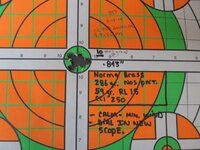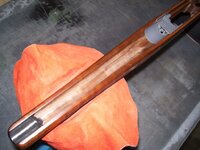I think I want to free float my barrel. The gun is an older Remington 700 with factory wood stock. Is there any reason not to float the barrel? This is a hunting rifle but Ive recently enjoyed some target shooting with it and want to see if I can tighten up my group. It works fine for hunting, but I don't want to do something to make it worse for that or open up a bigger project than I'm prepared for.
I did some searching and found the tool Im looking for is called an inletting tool. Brownells sells them for 30 bucks, easy enough except my stock barrel is tapered... the majority of it measures .660". So what is the process to inlet the stock with just one, say 11/16" (.688") inlet tool including around the thickest part of the barrel where it screws into the action?
also, upon inspection it appears the barrel is contacting the stock near the end about where the sling screw is installed. Ive heard that some companies do this on purpose for accuracy (with a pressure pad...?) so would removing this contact area hurt accuracy?
I did some searching and found the tool Im looking for is called an inletting tool. Brownells sells them for 30 bucks, easy enough except my stock barrel is tapered... the majority of it measures .660". So what is the process to inlet the stock with just one, say 11/16" (.688") inlet tool including around the thickest part of the barrel where it screws into the action?
also, upon inspection it appears the barrel is contacting the stock near the end about where the sling screw is installed. Ive heard that some companies do this on purpose for accuracy (with a pressure pad...?) so would removing this contact area hurt accuracy?

















